The calendar app is one of the unsung heroes found within your iPhone. It's the ultimate personal assistant that you've come to rely on to keep track of your schedule and ensure you never miss a class or meeting, all while reminding you of upcoming birthdays and deadlines to help maintain good relationships with loved ones and colleagues.
With glut of calendar apps available on the iOS App Store, however, choosing a calendar to meet your school, work, and social needs can be a daunting and expensive process. Because of this, we've decided to round up the five best calendar apps for iOS to help you decide on whether or not to ditch the stock Apple Calendar app that you've been relying on forever.
Table of Contents
Comparison Chart
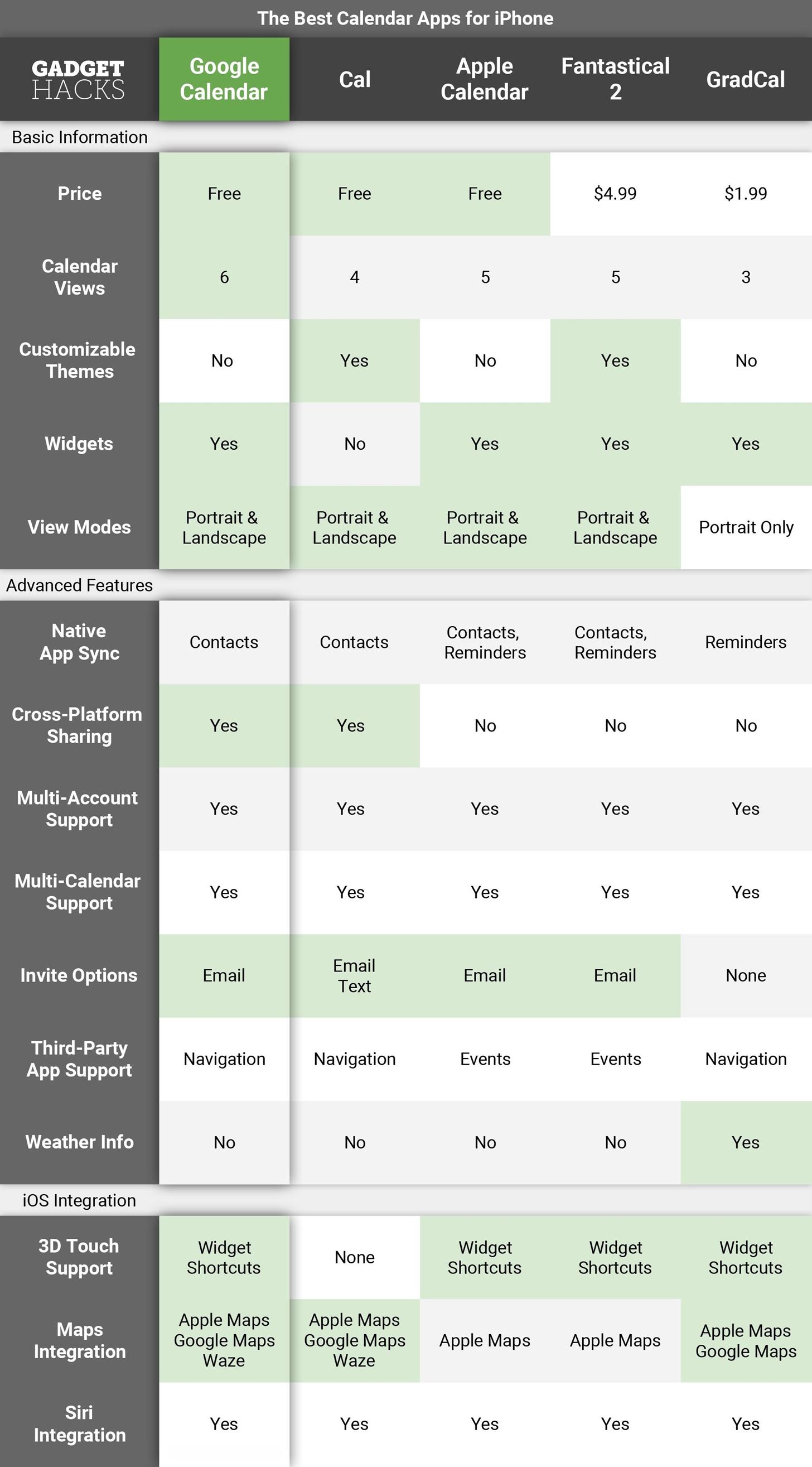
Key Comparison Points
- Price: While having to pay for a calendar app isn't necessarily a bad thing, it's important to distinguish between apps that offer enhanced features that justify their cost and apps that will basically give you more of the same.
- Calendar Views: Calendars can be viewed in numerous ways — from schedule views that show your day's agenda at a glance to 30-day views that give you a better idea of where you are in the month. A great calendar will give you multiple ways to view your agenda without sacrificing ease of use.
- Customizable Themes: For any given app, a customizable UI has increasingly become more desirable, and usually comes as an option to choose between light and dark modes.
- Widgets: This handy option gives you the ability to quickly preview upcoming events within your calendar app, either on your iPhone's Today page or through 3D Touch, giving you multiple ways to access your schedule without the need to open the app itself.
- View Modes: Most calendar apps give you the ability to view your agenda either through the standard portrait mode, or a much larger landscape mode for easier reading.
- Native App Sync: In addition to navigation, quality calendar apps have the added ability to create events or invite loved ones and colleagues to events from a separate app, usually via your iPhone's Mail or Messages app, or as a share extension which can be accessed from almost any app.
- Cross-Platform Sharing: Calendar apps that are available for both Android and iOS have a distinct advantage over ones that are exclusive to iPhone, as they can be used on both platforms for significantly greater accessibility.
- Multi-Account Support: Many calendar apps have the added ability to sync with multiple accounts, spanning from your Gmail and Apple account to Facebook and others. This helps ensure you're never out of the loop with regards to events and scheduling in general.
- Multi-Calendar Support: No matter how great a calendar app may be, it still needs the ability to sync with other, more established calendars like Facebook and Outlook in order to prevent loss of vital data and ensure your schedule is always up to date.
- Invite Options: For events that require the participation of more than one person, like a group study or work meeting, a large number of calendar apps now feature a built-in invite option to share events with friends, family, and colleagues.
- Third-Party App Support: In addition to support for native iOS apps like Messages and Apple Maps, a handful of calendar apps take it a step further with the ability to sync with third-party apps in the form of sharing, navigation, or both to give you even more options.
- Weather Info: While still not mainstream, the inclusion of weather forecasts within your calendar is slowly starting to take hold, and will undoubtedly become more popular as more calendar apps integrate it into their UI.
- 3D Touch Support: When used in conjunction with a supported calendar app, this nifty iPhone feature gives you added accessibility, and lets you preview your schedule on the fly, in addition to creating events and viewing reminders using shortcuts.
- Maps Integration: With so many events that require you to travel, it's become essential for calendar apps to feature full Apple Maps integration to seamlessly transition from your scheduled event to navigation for added convenience.
- Siri Integration: Apple's virtual assistant has become an asset in terms of hands-free use, and when fully supported, can not only open your calendar app, but also interact with it to add new events, navigate to a location, and so on.
How We Chose These Apps
In selecting calendar apps to compare, we laid out some ground rules. First, we ruled out apps that either cost over $9.99 or required an annual subscription, as these placed them firmly out of reach many — most notably, students — who may only have a limited budget to work with.
Secondly, we only selected calendar apps that support multiple email and social media accounts, in addition to full compatibility with popular calendars like Outlook, Google, and Facebook, as these elements enhance the apps' capabilities to totally stay on top of your schedule and ensure you never miss out on any event, regardless of where it's stored.
App 1: Google Calendar
When it comes to calendar apps, Google Calendar reigns supreme, incorporating a slew of awesome features such as support for multiple calendars, reminders, and events into an intuitive, user-friendly UI that makes it the gold standard of calendar apps. To put it into perspective, you'll probably pass on a calendar app — no matter of how great they may be — if they don't feature Google Calendar support.

Like its Apple Calendar counterpart, Google Calendar comes standard on many Android devices such as the Pixel 2. And as an official app by the tech titan, this calendar functions seamlessly with other Google services, ranging from Gmail to Google Maps, with the added bonus of it all being done under your Google account. This brings us to its biggest strength: The ability to work across almost all devices.
Because Google Calendar works for both iOS and Android, you can freely access your calendar app on both platforms using only your Google credentials. Same goes for the web version of Google Calendar, which works on all major desktop operating systems. So no matter what device you're using, you'll be able to access all the same appointments and information, all while enjoying a similar user experience.
Google Calendar gives you the most options in terms of how to view your calendar, including a schedule view that only shows your your upcoming itinerary, one and three day views that give you a clearer idea of what's planned throughout the day, and standard week and month windows. Schedule view is noteworthy, as it also lets you view both it and your 30-day calendar by tapping on the month.



To further enhance user-friendliness, Google Calendar lets you color code individual events to keep your calendar neat and organized. This simple system also gives you the added benefit of being able to easily sort through the day's agenda by way of differing color codes assigned to each event, so if you set your payday as a recurring bi-weekly event marked as "Basil," you'll instantly view it as soon as you open the app.
A widget for Google Calendar can be added onto your iPhone's Today View to instantly see your schedule while on the go. You can even access a quick summary in the form of another widget — this time through 3D Touch.


Thanks to full 3D Touch support, you can quickly check upcoming events or add a new event reminder or goal without having to open the app. 3D Touch functions within Google Calendar as well, so you can check out future itineraries on the fly simply by pressing on the target date to pull out a quick preview.
If you rely on your calendar to keep track of your travel plans, Google Calendar has you covered with support for Apple Maps, Google Maps, and Waze. To do so, simply tap on the target event, then select the address within the event page. From there, tap on your favorite navigation app from the list that appears to fetch directions to the event.



In all, you really can't go wrong with Google Calendar as your go-to app for all your scheduling needs. It comes with a ton of features and support without sacrificing ease of use. All of these combined far outweigh its shortcomings, namely the lack of built-in weather forecasts and customizable themes, making it a great all-around companion for students and worker bees alike.
App 2: Cal
Cal is a noteworthy calendar app that focuses on simplicity and features a streamlined UI that seamlessly blends your calendar and daily schedule to help you focus more on your agendas for the day. Don't let its seemingly simple design fool you, however, as Cal still has what it takes to keep up with your busy lifestyle — even if it's not as feature-laden as other calendar apps on this list.

Cal features a clean interface that connects to your Apple Calendar and Contacts app to ensure your schedule always stays up to date. Like Google Calendar, Cal is a cross-platform app, giving you the added ability to view your calendar on both iOS and Android devices, in addition to sharing events to loved ones regardless of which platform they're on.
As far as custom themes go, Cal takes a different approach compared to other calendar apps that basically offer light and dark themes, and instead gives you a wide selection of photos and GIFs of varying themes to enable. These randomly generated images are then used as backdrops to your calendar, giving it a relaxing ambiance that helps get you in the right mood as you prepare for the tasks that lie ahead.



Cal's intuitive UI lets you quickly view, edit, and add new events to your calendar. Tapping on an agenda takes you to a page detailing the event. From there, you can easily invite loved ones using your email or Messages app. And if you tagged a location for the event, you can hit the navigate button to instantly get directions using your navigation app of choice, such as Google Maps, Apple Maps, or Waze.


Because of its heavy focus on daily events and tasks, however, Cal doesn't offer as many options to view your calendar, and it limits your ability to view your schedules in two-hour windows for the week at most by viewing the calendar on landscape mode. And while month and week views are available, no options exist for viewing your calendar in years.

Cal is also the only app in this list that doesn't feature 3D Touch and widget support, limiting its overall accessibility. In essence, the only way to check your schedule is it by physically opening the app to view your agendas for the day, unlike more popular apps that you can preview through your iPhone's Today view or via 3D Touch.
Cal also doesn't have weather forecasts built-in, which means you'll have to rely on a separate app to find out pertinent weather information for your day's events.
Despite these shortcomings, however, Cal is still a great alternative if you're someone who tends to prioritize daily events over agendas that are weeks or months ahead. And with an intuitive UI and beautiful presentation, we recommend giving this calendar a try to see if it's the right fit for you.
App 3: Apple Calendar
Apple Calendar comes standard with all iOS devices, and thanks to iCloud support, you can sync your calendar across your iPhone and iPad so you're always up to date with daily tasks and events. And as the foundation that all third-party calendar apps draw upon for vital data, it's only natural that this app be included in our list.

As typical of Apple's design philosophy, Apple Calendar centers around a clean and simple UI that helps you concentrate on your events, making interaction fluid and almost instinctive. This approach results in a calendar that's arguably the most user-friendly on this list — you can create a new event, replete with options such as location tags, invites, and notes, simply by tapping on the + button.



As a native iOS app, Apple Calendar's system-wide integration gives it high marks compared to the other calendars on this list. Thanks to default widget and 3D Touch support, for instance, you're able to quickly preview your calendar through your iPhone's Today page and via 3D Touch on the app's icon, in addition to instantly creating a new event through the shortcut that appears below your schedule preview.


Apple Calendar also works in conjunction with Apple Maps to give you location information on any event, in addition to navigation support. As convenient as this feature is, however, this is where it starts to get shaky for Apple Calendar, as it doesn't give you the freedom to choose your favorite navigation app like Google Maps or Waze.
Besides limited support for navigation apps, Apple Maps is also limited only to iOS devices, and won't work on other platforms like Android, though you can still share invites to events Android via email. Apple Calendar doesn't have weather forecasts built into its calendar, which leaves you dependent on a separate app to check for vital weather information.
That said, Apple Calendar still meets the cut. And like its Google counterpart, the app's capabilities and easy to use interface far outweigh any of the shortcomings it has. Best of all, Apple is famous for continually improving on its apps, so it wouldn't be a surprise if any of these issues are addressed as iOS continues to evolve.
App 4: Fantastical 2
Fantastical 2 is another great alternative to Apple Calendar that's incredibly easy to use thanks to its intuitive UI and nifty features. Like Cal, this calendar features a customizable theme, giving you the ability to choose between a standard theme that sets your events against a white backdrop and an eye-friendly dark mode.

What sets Fantastical 2 from other calendar apps on this list, however, is its natural-language event creation feature that streamlines itinerary additions through predictive analysis. Inputting "Dinner at Edward's Steakhouse," for instance, will automatically set your event at around 6 PM and retrieve the restaurant's address for navigation purposes.
Fantastical 2 is also the only app on this list that features a share extension, letting you create events from outside of the app itself. If you find a new restaurant that you want to try out, for example, simply hit the share button from within its website and select Fantastical to set up a new event.
A widget for Fantastical 2 can be added onto on your iPhone's Today View to see your schedule on the fly. And thanks to full 3D Touch support, you can quickly view what's next on your agenda, in addition to adding new events, viewing reminders, and searching for specific to-dos.


Fantastical's navigation feature is set to transfer you to Apple Maps by default for driving directions, though you can use either use Google Maps or Waze by selecting either app from within its settings page. That said, the app has a hidden feature which lets you set your navigation app of choice on the fly by long-pressing on the bent arrow icon on the lower-right corner of the map.


As great as Fantastical 2 is for your scheduling needs, is not without its shortcomings. At $4.99, it's the most expensive app on this list, which may make it a deal-breaker for some, most notably students that have very limited budgets to contend with.
There are other drawbacks to Fantastical 2 that are worth mentioning, such as its lack of weather forecast support. And because the app is only available for iOS devices, cross-platform compatibility with Android devices is nonexistent. Despite these weaknesses, however, Fantasical 2 remains as one of the most popular calendars on the iOS App Store due to the abundance of features it brings to the table.
App 5: GradCal
Last but certainly not least is GradCal, a relatively new calendar app on the App Store that does away with all the bells and whistles to provide you an easy to understand calendar for lightning fast access. GradCal features a gorgeous interface which sets text and other information against a dark backdrop that's easy on the eyes.

GradCal has a simple UI, centering around the 30-day calendar view that provides a quick summary of your events and to-dos for each day. Tapping on a day will show your whole schedule for that particular day, while tapping on an individual event will yield a popup window with more details like location. You can even view your calendar in years by hitting the calendar icon on the bottom left of the screen.



As far as customization goes, GradCal is pretty limited compared to Cal and Fantastical 2 and doesn't give you the ability to apply different themes. That said, the app does provide some options to tailor it to your needs, such as the ability to change the size of its font for easier viewing.
For events that require you to travel, GradCal gives you the option to navigate to your destination using either Apple or Google Maps, which can be done simply by tapping on the address from within the details page of the event. Waze isn't supported, however, which can be a limiting factor if you rely on that app for all your driving needs.
For ease of access, a widget for GradCal can be added onto on your iPhone's Today View. In addition to this, a quick summary of your schedule can also be accessed via 3D Touch on GradCal's icon, but doesn't let you add new events or reminders.

Out of all the apps on this list, only GradCal features weather forecasts built in to its calendar. Using data sourced from OpenWeatherMap, the app displays a 5-day weather forecast within the calendar starting from the current day, along with a detailed 3-hour forecast when viewing your schedule for a particular day.
The forecasts are easy to read thanks to simple images along with accompanying text describing varying weather conditions such as cloudy and clear skies. An while there's a temperature reading to complete the forecasts, they're only limited to Celsius readings, with no options available to set it to Fahrenheit.
GradCal's shortcomings don't end there, as the app has some noteworthy limitations that kept it from rising to the top of this list. For starters, GradCal isn't a free app, though at $1.99, it's nowhere near as expensive as Fantastical. Second, the app is only available for iPhones, which makes cross-platform compatibility with Android devices out of the question.
In addition to those, GradCal doesn't provide any options for event sharing and invitations, forcing you to rely on Apple Calendar to perform such tasks. Finally, the app can only be viewed in portrait mode, which may be hard to view if you have less than stellar eyesight. If you can live with these flaws, however, GradCal is certainly worth a try — it's one of the easiest calendar apps to interact with, and among the most beautiful to boot!
Conclusion
At the end of the day, Google Calendar was picked above the rest due to the sheer amount of features packed within the app, and the balance it achieves with regards to overall ease of use. That's not to say that the rest of the calendars were bad in comparison, however. All of the apps on this list have standout features — such as GradCal's weather integration — that make them solid choices and worth trying out.
What's your go-to calendar when all is said and done? We'd love to hear what you think, so be sure to post in the comment section below and share your experiences with these apps, or mention an interesting calendar that you think would make a worthy contender.
Just updated your iPhone? You'll find new features for Podcasts, News, Books, and TV, as well as important security improvements and fresh wallpapers. Find out what's new and changed on your iPhone with the iOS 17.5 update.
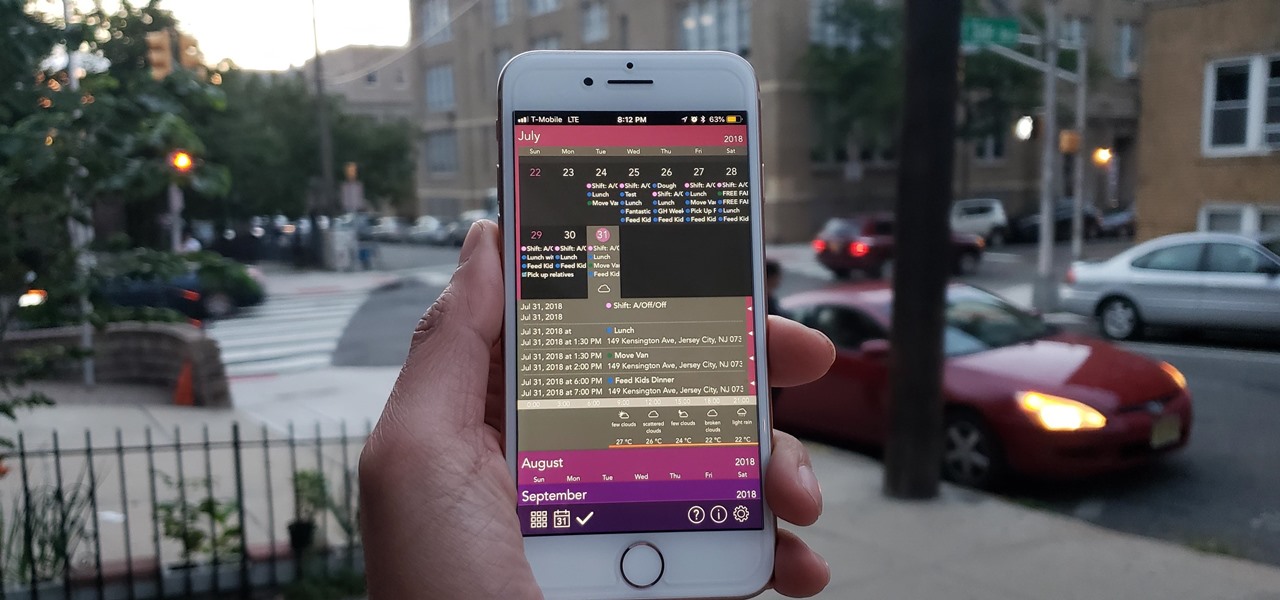









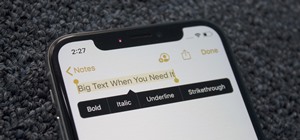
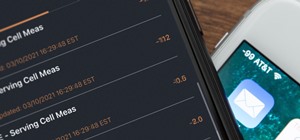

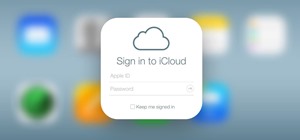


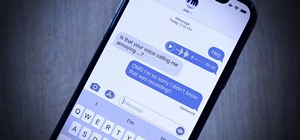

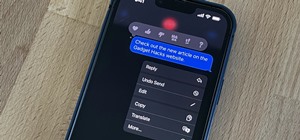
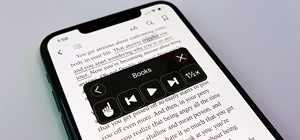


2 Comments
You forgot PocketLife, it's a paid app, but it's what AppleCal used to be. Looking at dots on a monthly calendar view is useless. PocketLife allows multiple calendar sharing and viewing partial list of what's happening on a monthly view. Synced Calendars works great to share events with my better half.
PocketLife is a great app. We actually had it on our shortlist but had to rule it out in the end due to having too much in-app purchases. It's a solid option though, without a doubt!
Share Your Thoughts